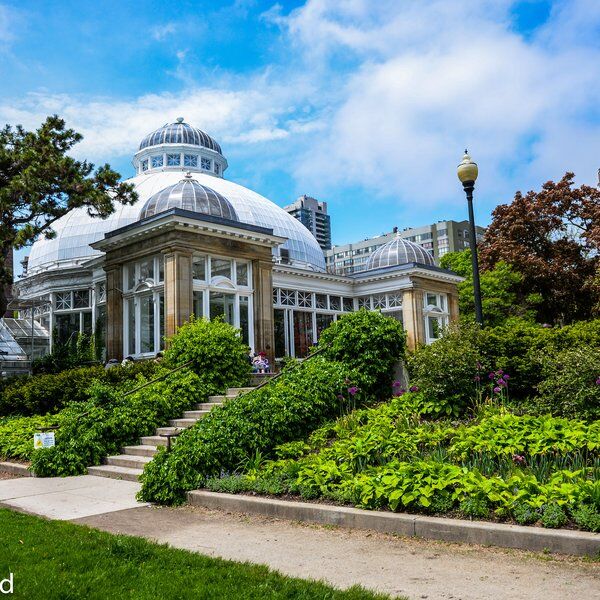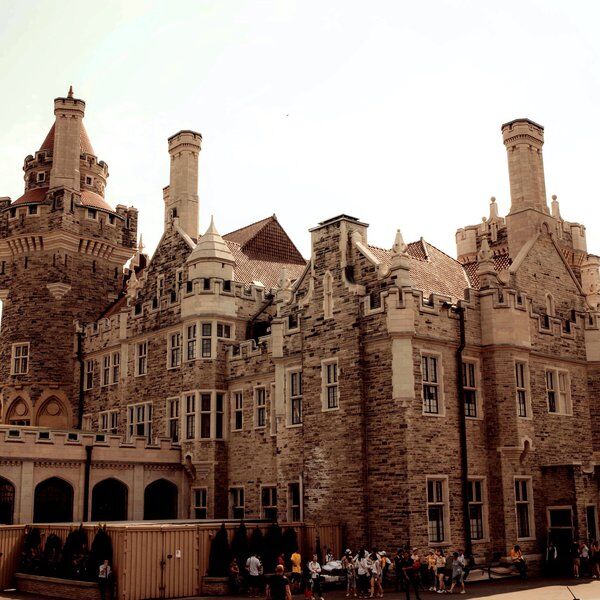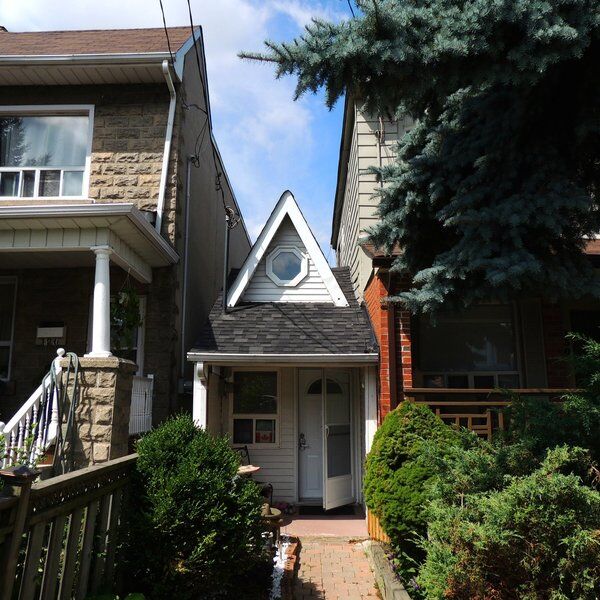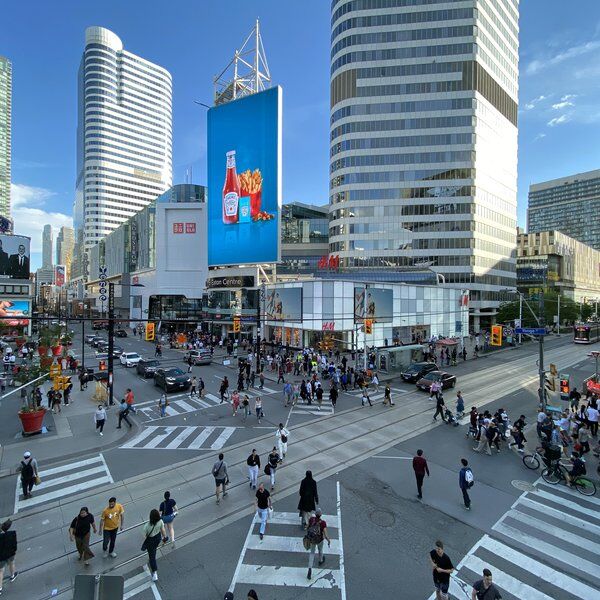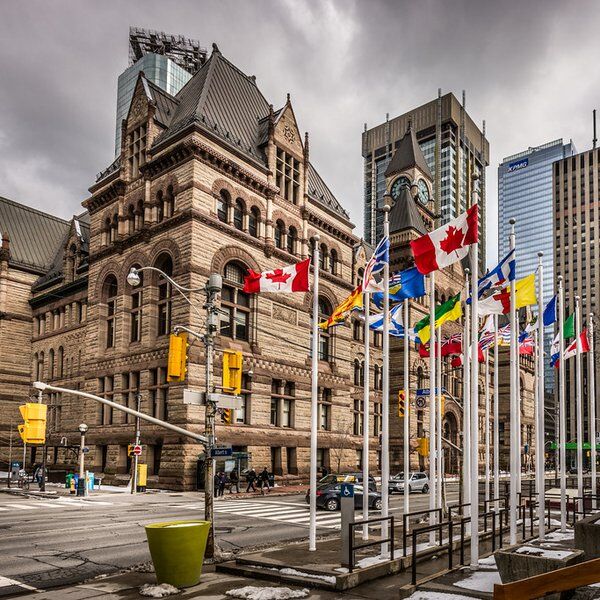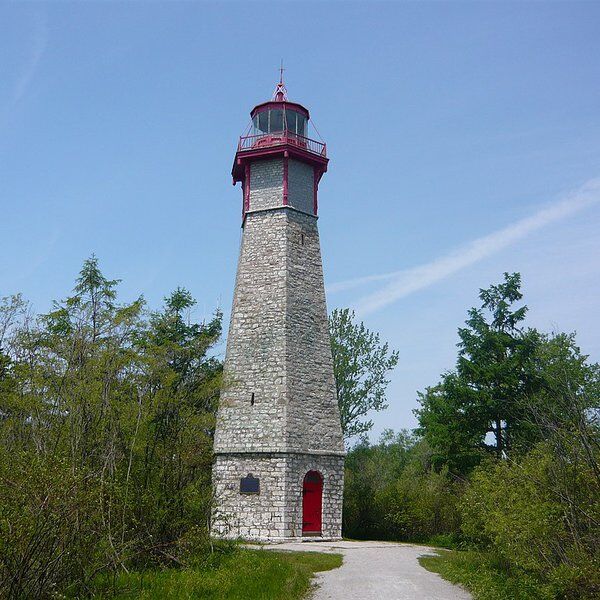Discover the Gooderham Building
Often referred to as Toronto's Flatiron Building, the Gooderham Building, is one of the city’s most beloved landmarks. The building can be found at the intersection of Wellington Street and Front Street, and not only showcases incredible architectural design but also tells the story of an influential Toronto family, prominent in the city's industrial history. From its conception in the late 19th century to its present-day status as a protected heritage site, the building’s history is as intriguing as its appearance. Today, the building is a functional office space with commercial areas, including a cozy pub in its basement.
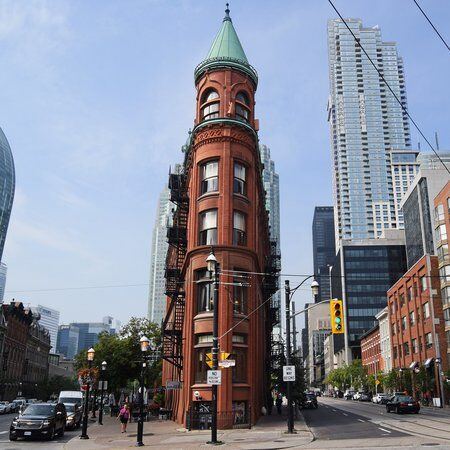
Gooderham Building History
The Gooderham Family
The Gooderham Building's story begins with the prominent Gooderham family, one of Toronto's most influential industrial dynasties. The family’s patriarch, William Gooderham, along with his brother-in-law James Worts, established the Gooderham and Worts Distillery in 1837.
By the late 19th century, the Gooderham's were not just distillers; their business had grown to encompass banking, shipping, railways, and woolen mills. George Gooderham, the eldest son of William Gooderham became president of the distillery, the Bank of Toronto, and the Manufacturer's Life Insurance Company. By the time of his death in 1905, he was one of the wealthiest and most powerful men in Ontario.
As the Gooderham family's empire expanded, George Gooderham decided to move the headquarters of Gooderham & Worts Limited from the distillery site to Toronto's financial hub in the St. Lawrence area. He envisioned a grand office space that would mirror the might of the family's accomplishments. Thus, in 1891, he commissioned architect David Roberts Jr., who had already worked on several of the family’s projects, to design what would become one of Toronto's most recognizable structures.

The Coffin Block
The chosen location was a triangular piece of land at the intersection of Wellington Street and Front Street in Toronto’s bustling St. Lawrence Market District. This plot of land was formerly occupied by the Coffin Block.
Named for its coffin-like shape, the Coffin Block was built in the early 19th century when this area was part of Toronto's downtown core, close to the wharves along the lakefront. By the time the Gooderham Building was conceived, the Coffin Block had become outdated, and its demolition was necessary to make way for the new, modern structure.

Building the Gooderham Building
Construction of the Gooderham Building began in 1891 and was completed the following year. The building’s distinct shape was dictated by the layout of the streets around it. While Wellington Street follows the traditional grid pattern of the old Town of York, Front Street traces the original shoreline of Lake Ontario, creating a diagonal intersection. Any building that was to fit into this space required an innovative design solution. The resulting triangular Gooderham Building became one of the first flatiron buildings in the world, preceding New York City's more famous Flatiron Building by a full decade.
The total cost of construction was $60,000—a significant sum at the time—reflecting the Gooderham family's successful empire. The building was the most expensive office space in Toronto at the time, and it quickly became a prestigious address in the city.

Gooderham Building Architectural Design
David Roberts Jr. designed the building in a style that combined elements of Romanesque and Gothic Revival architecture. The exterior is characterized by red brick, arched windows, cornices, friezes, and a foundation made from Ohio sandstone. The east end of the building is crowned by a prominent tower, which was George Gooderham's personal office. This tower is a particularly impressive design feature for its curved glass windows, sashes, and a conical copper roof topped with decorative dormers. Inside, the building contained one of Toronto's oldest electric elevators.
One of the building's most famous features is the mural on its west wall. Painted in 1980 by Canadian artist Derek Besant, the mural uses a trompe-l'œil effect to give the illusion of the building’s edges fluttering away, revealing the Perkins Building across the street. This artistic addition has become an attraction in its own right and today lots of visitors come to marvel at its clever design.

Preserving the Gooderham Building
Heritage Status
The building housed the offices of the Gooderham and Worts distillery until 1952. However, as the distillery’s operations evolved, the need for the building diminished, and the Gooderham family eventually sold the property in 1957. Despite the sale, the building's historical and architectural significance prevailed.
The City of Toronto sought to protect this significance by designating the Gooderham Building as a historic site under the Ontario Heritage Act in 1975. Two years later, the Ontario Heritage Trust secured a conservation easement on the property, ensuring its continued protection.
Building Renovations
Over the years many restorations have been carried out on the Gooderham Building, which have focused on preserving its features, such as the decorative friezes, the tower's pilasters, and the copper roof, while updating the building for modern use. The first notable renovations were carried out in 1998 by the then-owners, Michael and Anne Tippin and more recently the development firm Woodcliffe Landmark Properties completed a large-scale restoration in 2011.
Today, after more than 130 years, the Gooderham Building remains one of Toronto’s most photographed and beloved structures, second only to the CN Tower. It represents the entrepreneurial spirit and legacy of the Gooderham family, whose impact on Toronto’s development is still felt to this day.
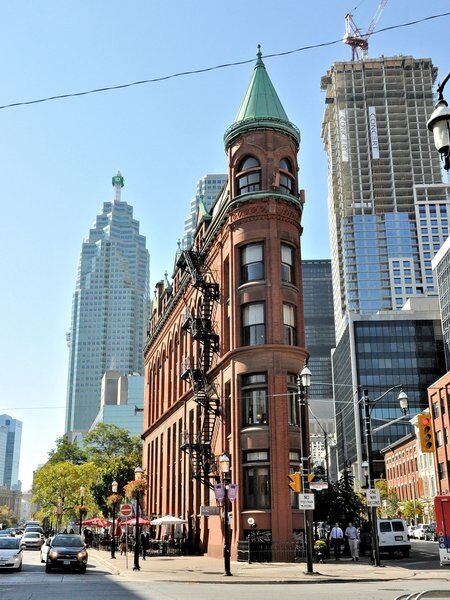
Visiting the Gooderham Building in Toronto
Located in the heart of the city, a short walk from other distinct landmarks such as the Cathedral Church of St. James, St. Lawrence Hall, and St. Lawrence Market, Toronto’s Flatiron Building easily fits into a day of sightseeing.
Visitors to the area can take a stroll through Berczy Park, which is situated behind the building. The park, updated in 2017, features a stunning three-tiered fountain designed by Montreal landscape architect Claude Cormier. The fountain, with 27 cast-iron dogs and a single cat, is a favorite spot for dog lovers and a charming spot near the Gooderham Building to recharge and enjoy a picnic.
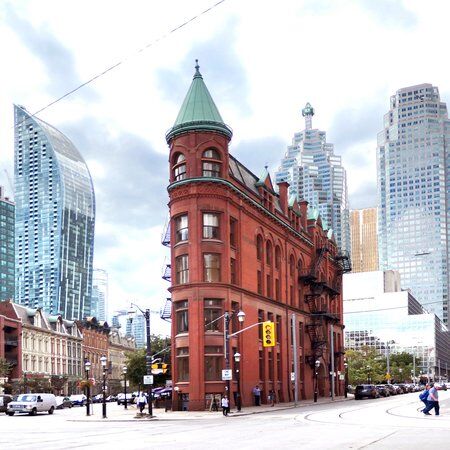
Explore Beyond the Gooderham Building with CityDays
After admiring the Gooderham Building and feeling wowed by its incredible design, why not continue your adventure with CityDays? If you’re interested in exploring other hidden gems we think you will enjoy one of our CityDays Treasure Hunts in Toronto and in particular, the Old Town Hunt.
Our urban adventures bring the secrets of Toronto to life in a fun and interactive way, so you can uncover the history of the city whilst exploring its often overlooked places of interest such as historic marketplaces and an intriguing fountain.
Along the way, you and your teammates will solve puzzles and clues that interact with the streets themselves to unlock fascinating facts as well as uncover great cafes, pubs, and plenty of surprises.
The Old Town Hunt is an ideal trail for locals, visitors and anyone looking to make the most of this unique and fascinating area. We think you’ll love it but for more information on this tour, and our other Toronto adventures click here: Toronto Urban Adventures | CityDays.







